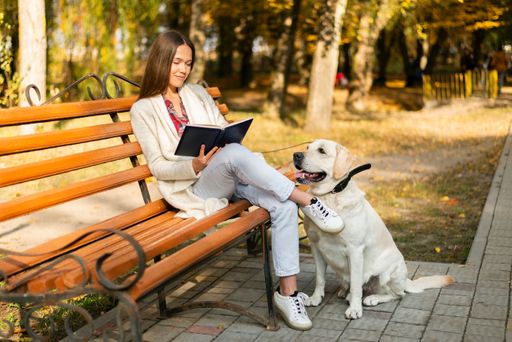Around 61 million people in America keep small pets such as fish, reptiles, birds, hamsters and guinea pigs in their homes. These pets do a valuable job in the household, providing enjoyment, teaching children about caring for animals, and offering companionship. Fish also look beautiful and are extremely calming to watch. If you have a dog, you will need to be careful how you introduce them to the small pets in your household, particularly if you have a dog that was bred for hunting. You may need to keep some small pets away from your dog entirely.
Fish in the garden
If you are keeping fish in a pond in the garden, your dog is likely to be curious about these, at least at the beginning. If you have a breed of dog like the Labrador Retriever that is extremely fond of water, they may even try to get in the pond and have a swim on a regular basis. If you want to keep your dog out of the fish pond, you may want to secure a wire grid cover over the top of it. This will ensure that the fish and water stay safe in the pond, without a curious dog trying to paw at them.
Fish in the aquarium
If you are keeping fish in an open aquarium, you should make sure that you use natural products to clean the water, in case your dog is tempted to drink out of the tank. An eco-friendly fish tank is better for the fish, too. Rather than using harsh chemicals that can harm the environment and affect the health of the fish, you fill the aquarium with plants that can create a balance of natural bacteria as well as absorbing toxins. Working with the natural ecosystem will mean your fish can thrive. You also don’t need to panic if your dog takes a drink of the water.
Hamsters and guinea pigs
Small furries like hamsters and guinea pigs can be introduced to some dogs—you are more likely to be successful if they have never seen the small animal before. Keep the introduction low-key, in slow, careful stages. Use positive reinforcement with your dog to encourage calm behavior around your small pet—a little treat can go a long way. Your introductions may be easier with calmer breeds like the Golden Retriever, than with terriers that were originally bred to get rid of rodents and small furry animals, or greyhounds that instinctively chase them. One thing to be wary of is that your dog shouldn’t eat hamster or guinea pig poop as this is toxic.
Small birds
Introductions with dogs and pet birds should be done extremely gradually, only letting your dog be near the bird for a few minutes at a time over the course of several weeks. Make sure that you choose a neutral area to introduce them, away from the birdcage—this will reduce the possibility that there will be aggressive behavior, both from the bird and your dog, and keep your dog on the leash. Reward both bird and dog for positive, calm behavior. After a few weeks, allow your dog off the leash for a few minutes with your bird as long as your dog continues to behave. If you are ever in doubt, then don’t take any risks, keep your bird in the cage when your dog is around.
It is perfectly possible to keep small pets if you have a dog and some will even get on well if they are introduced properly. Just be aware that many dog breeds were bred to catch small animals and if you are concerned, keep them separated.



















